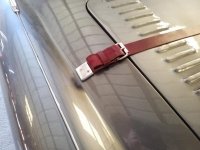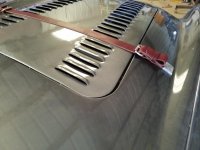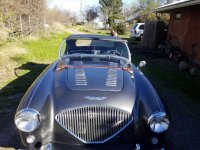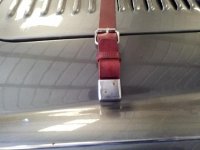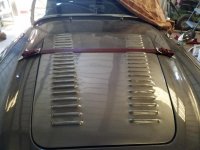pan
Jedi Warrior
Offline
Rick, I have to say that in my opinion louvres look a bit out of place on six cylinder Healeys. With the bonnet scoop already there rows of louvres make the bonnet look a bit crowded. The Works Rally cars had exit vents at the rear of the bonnet which look better to me, and are probably more effective.

 Hi Guest!
Hi Guest!

 smilie in place of the real @
smilie in place of the real @
 Pretty Please - add it to our Events forum(s) and add to the calendar! >>
Pretty Please - add it to our Events forum(s) and add to the calendar! >> 

